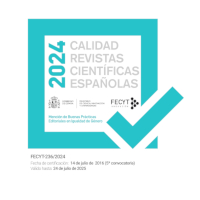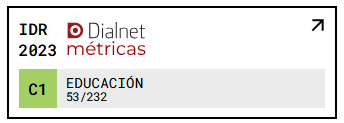Person-centred planning: an example of best practices in the field of intellectual disability
DOI:
https://doi.org/10.18172/con.2754Keywords:
Intellectual disability, person centred planning, professionals, best practicesAbstract
At present, the focus of supports in the field of intellectual disability is the individual, with special emphasis on decision-making by users of different services and, therefore, on the need of consultation. In that sense, Person Centered Planning (PCP) becomes an example of best practice that leads the individuals as a central reference, in order to know what is desirable for them and make it possible. This practices requires the professional’s participation and involvement, to carry out all the changes that it implies. The purpose of this paper is to present a questionnaire, which is used to assess the perception of professionals on PCP methodology. The results of a pilot study (N = 18) are described, showing the importance of professional’s training. An organization that is really committed to this approach, will be more effective if it involves those who have to implement it, providing them training related to this best practice.
Downloads
References
American Association of Intellectual and Developmental Disabilities (2011). Discapacidad intelectual: definición, clasificación y sistemas de apoyo (11ª ed.). Madrid: Alianza.
American Psychiatric Association (2013). Diagnostic and Statistical Manual of Mental Disorder. Fith Edition. DSM-5. Washington: American Psychiatric Publishing.
Arteta, R., Peralta, F., Ezquerro, A., Zazo, M. J. y Barbería, M. (2012). Planificación Centrada en la Persona. Pamplona: ANFAS.
Batanero, J. M. (2006). ¿Educación inclusiva en nuestros centros educativos? Sí, pero ¿cómo? Contextos Educativos, 8(9), 135-145.
Black, L. A., McConkey, R., Roberts, P. y Ferguson, P. (2010). Developing a person-centred support service for families caring for children with severe learning disabilities in rural and urban areas. Journal of Intellectual Disabilities, 14(2), 111-131.
Borg, M. (2001). Teachers Beliefs. ELT Journal, 55(2), 186-188.
Brown, I., Galambos, D., Poston, D. J. y Turnbull, A.P. (2007). Person centered and family centered support. En I. Brown y M. Percy (Eds.), A comprehensive guide to intellectual and developmental disabilities (pp. 351-361). Baltimore: Paul H. Brookes.
Brown, I., Parmenter, T. R. y Percy, M. (2007). Trends and issues in intellectual and developmental disabilities. En I. Brown y M. Percy (Eds.). A comprehensive guide to intellectual and developmental disabilities (pp. 45-57). Baltimore: Paul H. Brookes.
Cambridge, P. y Carnaby, S. (Eds.) (2005). Person centered planning and care management with people with learning disabilities. Londres: Jessica Kingsley Publishers.
Coyle, D. (2011). Impact of person-centred thinking and personal budgets in mental health services: reporting a UK pilot. Journal of Psychiatric and Mental Health Nursing, 18(9), 796-803.
Dowling, S., Manthorpe, J. y Cowley, S., (2007). Working on person-centred planning. From amber to green light? Journal of Intellectual Disabilities, 11(1), 65-82.
Grigal, M., Neubert, D., Moon, M. S. y Graham, S. (2003). Self-Determination for Students with disabilities: Views of Parents and Teachers. Exceptional Children, 70(1), 97-112.
Holburn, S. (2003). Cómo puede la ciencia evaluar y mejorar la Planificación Centrada en la Persona. Siglo Cero, Revista Española sobre Discapacidad Intelectual, 34(4), 48-64.
Holburn, S. y Jacobson, J. W. (2004). Implementing and researching person-centered planning. En L. Williams (Ed.), Developmental disabilities: advances in scientific understanding, clinical treatments and community integration (pp. 315-330). Reno, N.V.: Context Press.
Holburn, S. y Vietze, P. (2002). Person-centered planning: Research, practice and future directions. Baltimore: Paul H. Brookes.
López, M. A., Marín, A. y De la Parte, J. M. (2004). La planificación centrada en la persona. Una metodología coherente con el respeto al derecho de autodeterminación. Una reflexión sobre la práctica. Revista Siglo Cero, 35(1), 1-16.
Magit-McLaughlin, D., Spinosa, T. R. y Marsalis, M. (2002). Overcoming the barriers: moving toward a service model that is conductive to person-centered planning. En S. Holburn y P. Veitz (Eds.), Person-centered planning: Research, Practice and Future directions (pp. 127-150). Baltimore: Paul H. Brookes.
Mata, G. y Carratalá, A. (2007). Planificación Centrada en la Persona. Experiencia de la Fundación San Francisco de Borja para personas con DI. Madrid: FEAPS-Cuadernos de Buenas Prácticas.
Morgan, S. y Yoder, LH. (2012). A Concept Analysis of Person-Centered Care. Journal of Holistic Nursing, 30(1), 6-15.
McConkey, R. y Collins, S. (2010). Using personal goal setting to promote the social inclusion of people with intellectual disability living in supported accommodation. Journal of Intellectual Disability Research, 54(2), 135-143.
Novak, A. y McBride, M. (2001). Increasing person-centered thinking: improving the quality of person-centered planning. A manual for person-centered planning facilitators. Minneapolis, Minnesota: University of Minnesota, Institute on Community Integration.
O’Brien, J. y Lovett, H. (1992). Finding a way toward everiday lives. The contribution of person centered planning. Pennsylvania: Office of Mental Retardation.
Olsson, L. E., Jakobsson Ung, E., Swedberg, K. y Ekman, I. (2012). Efficacy of person-centred care as an intervention in controlled trials – a systematic review. Journal of Clinical Nursing, 22, 456-465.
Pajares, M. F. (1992). Teachers Beliefs and Educational research: Cleaning up a messy construct. Review of Educational Research, 62(3), 307-332.
Pearpoint, J., O’Brien, J. y Forest, M. (2008). PATH: a workbook for planning positive possible futures: planning alternative tomorrows with hope for schools, organization, businesses, families (2ª ed.). Toronto: Inclusion Press.
Peralta, F., González-Torres, M. y Sobrino, A. (2005). Creencias y conocimientos de los profesores acerca de la conducta autodeterminada en personas con discapacidad cognitive. Revista de Investigación Educativa, 23(2), 433-448.
Robertson, J., Hatton, C., Emerson, E., Elliott, J., McIntosh B., Swift, P., … y Joyce, T. (2007a). Reported Barriers to the Implementation of PCP for People with Intellectual Disabilities in the UK. Journal of Applied Research in Intellectual Disabilities, 20, 297-307.
Robertson, J., Emerson, E., Hatton, C., Elliott, J., McIntosh B., Swift, P., … y Joyce, T. (2007b). PCP: factors associated with successful outcomes for people with intellectual disabilities. Journal of Intellectual Disability Research, 51(3), 232-243.
Sandoval, M. (2008). La colaboración y la formación del profesorado. Contextos Educativos, 11, 149-159.
Schalock, R. L. (2004). The concept of quality of life: what we know and do not know. Journal of Intellectual Disability Research, 48(3), 203-216.
Schalock, R. L., Brown, I., Brown, R., Cummins, R. A., Felce, D., … y Parmenter, T. (2002). Conceptualization, measurement, and application of quality of life for people with intellectual disabilities: report of an international panel of experts. Mental Retardation, 40(6), 457-470.
Seo, H., Wehmeyer, M. L., Palmer, S., Soukup, J. H., Williams-Diehm, K. y Shogren, K. (2012). Examining individual and environmental factors on levels of self-determination of students with disabilities: The relationship between self-determination and disability categories, gender, and educational settings. The Journal of Special Education: Theory and Practice, 13(2), 1-22.
Sevilla, J., Abellán, R., Herrera, G., Pardo, C., Casas, X., y otros (2009). Un concepto de Planificación Centrada en la Persona para el siglo XXI. Fundación Adapta. Recuperado de: http://www.miradasdeapoyo.org.
Pallisera, M. (2011). La Planificación Centrada en la Persona (PCP): una vía para la construcción de proyectos personalizados con personas con discapacidad intelectual. Revista Iberoamericana de Educación, 56(3), 1-12.
Verdugo, M. A., Gómez, L.E., Arias, B., Navas, P. y Schalock, R. L. (2014). Measuring quality of life in people with intellectual and multiple disabilities: validation of the San Martin Scale. Research in Developmental Disabilities, 35(1), 75-86.
Verdugo, M. A., Navas, P., Gómez, L. y Schalock, R. L. (2012). The concept of quality of life and its role in enhancing human rights in the field of intellectual disability. Journal of Intellectual Disability Research, 56(11), 1036-1045.
Verdugo, M. A. y Schalock, R. L. (2013). Discapacidad e inclusión: manual para la docencia. Salamanca: Amarú.
Verdugo, M. A., Vicente, E., Fernández-Pullido, R., Gómez-Vela, M., Wehmeyer, M. L., … y Guillen, V. M. (2015). A psychometric evaluation of the ARC-INICO Self-determination Scale for adolescents with intellectual disabilities. International Journal of Clinical and Health Psychology, 15(2), 149-159.
Wehmeyer, M. L., Abery, B., Zhang, D., Ward, K., Willis, D., Amin, W., … y Walker, H. (2011). A series of paper on scaling-up efforts to promote self-determination. Personal self-determination and moderating variables that impact efforts to promote self-determination. Recuperado de: gsd.org/news/personal-self-determination-and-moderating-variables-impact-efforts-promote-self-determination.
Wehmeyer, M. L., Agran, M. y Hughes, C. (2000). A National survey of teachers` promotion of Self-Determination and Student-Directed Learning. The Journal of Special Education, 34(2), 58-68.
Wehmeyer, M. L. y Little, T. D. (2013). Self-determination, positive psychology, and disability. En. M. L. Wehmeyer (Ed.), Handbook of positive psychology and disability (pp. 116-136). Oxford: Oxford University Press.
Wehmeyer, M. L., Palmer, S., Soukup, J. Garner, N. y Lawrence, M. (2007). Self-determination and student transition planning knowlegde and skills: predicting involvement. Exceptionality, 15, 31-44.
Downloads
Published
How to Cite
Issue
Section
License
The authors retain copyright of articles and authorize Contextos Educativos. Revista de Educación the first publication. They are free to share and redistribute the article without obtaining permission from the publisher as long as they give appropriate credit to the editor and the journal.
Self-archiving is allowed too. In fact, it is recommendable to deposit a PDF version of the paper in academic and/or institutional repositories.












